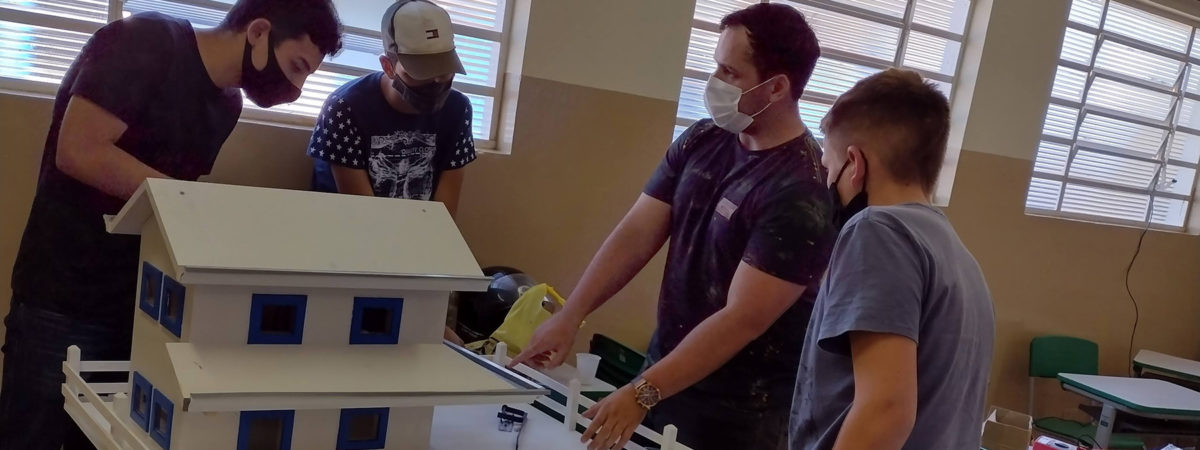
Trying to integrate a digital culture into a rural community with few technological resources and efficient connection networks in the midst of a pandemic forced schools to rethink their role. Our school is now a full-time school, and we have made significant changes across the curriculum, including new workshops that encourage creativity, the use of technological tools, and more students in leading roles. Along with these changes, teachers are participating in training to motivate and facilitate students through learning environments that are more real, practical, and relevant to their future careers and vocations.
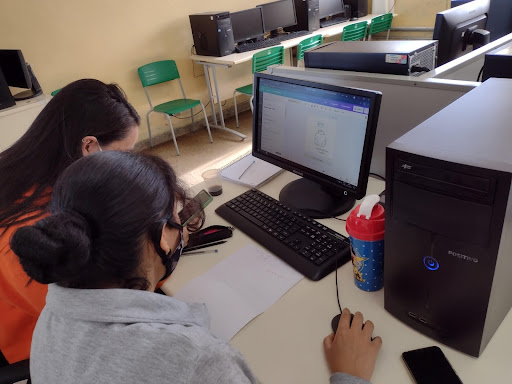
With the help of our assistant technology teacher, student Isabelle designs a logo to symbolize the Seeds for the Future project. Photo Credit: Ivanete Paes Landim
Our challenge with the Seeds for the Future project is to make students the protagonists of their own learning journey; researchers; and sowers of ideas for their peers and for the entire community. Giving students opportunities to develop and share their knowledge makes the school a true learning environment. To support this, we have a team of engaged teachers who also embrace the challenge t. In this way, we can all benefit from the solution that we produce and from the many ways that we are adapting available digital tools and creating others from our experiments.
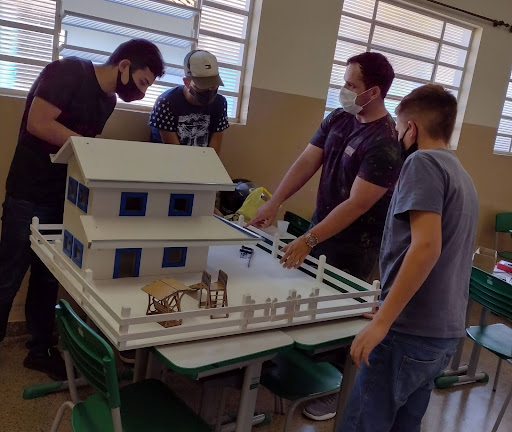
Caption: Prototype of Seeds for the Future Sustainable House. Photo Credit: Ivanete Paes Landim
Seeds for the Future emerged from an extracurricular project on the subject of sustainability, which is part of the high school and elementary curriculum for English language. As part of this, we study topics such as renewable and non-renewable natural resources, healthy food, and water resources. In our classroom discussions, we came to the conclusion that our project would have two focus areas: a prototype of a sustainable house created by students from Youth and Adult Education and Regular Education, and the construction of an automated vegetable garden at low cost with the use of an Arduino.
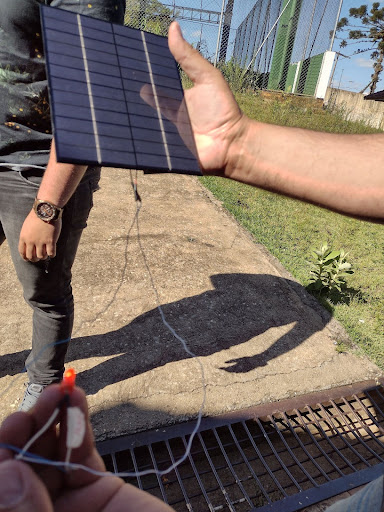
Caption: Arduino powered automation for vegetable garden. Photo Credit: Ivanete Paes Landim
Since our English language class activities already involve social issues and study of the Sustainable Development Goals, the entire project is contextualized well and involves collaboration among teachers from different disciplines in such a way that the school becomes a hub of bilingual learning.
Other activities revolved around construction, including making recyclable paper, rescuing native plants, and using natural resources to build a historic garden outside the classroom. The idea is to “sell the idea” to other schools and the school community through workshops.
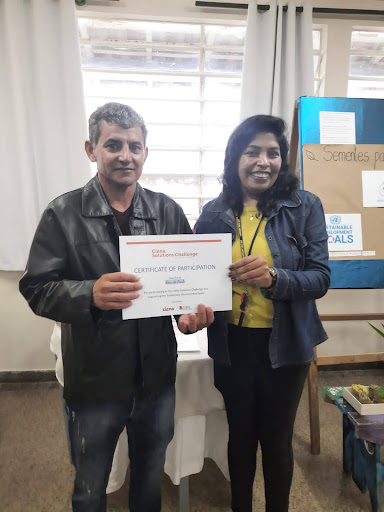
Celebrating and recognizing those who dedicated themselves to our Seeds for the Future project. Photo Credit: Ivanete Paes Landim
We have already started to bear fruit from our Seeds for the Future project. We’ve launched a partnership at Escola Simpliciano Campolim with Klingele Paper Nova Campina Ltda., a paper company in Nova Campina, to provide students with opportunities to take courses and receive apprenticeship training.
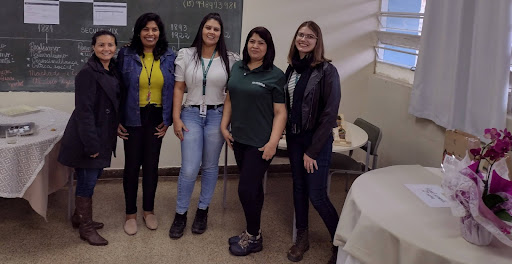
Representative from Klingele Paper Nova Campina Ltda. with Escola Simpliciano Campolim teachers. Photo credit: Ivanete Paes Landim
In addition, we are now connected with the São Paulo Media Center (CMSP). Professor Ed Gomes Jr., also a recipient of a Ciena Challenge Solutions Sustainability Award, invited the school to participate in a class on role-playing games, which teachers are now developing into an elective class.
Our schools are aiming to bring environmental, social, and citizen awareness to help the community, and we continue to work to be an example of good deeds, or “good seeds.” Thanks to the Ciena Solutions Challenge, we believe that we have already started to advance this aim and will build out our maker space in the upcoming year to share even more of our ideas.